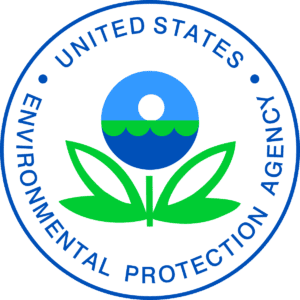UPDATE: EPA Releases PFAS Updated Drinking Water Health Advisories
 The U.S. Environmental Protection Agency (EPA) released interim and final health guidelines for several per- and polyfluoroalkyl substances (PFAS). This is part of the Biden Administration’s PFAS Strategic Roadmap outlining alleged environmental and health exposures related to these chemicals of concern. These health advisories are designed to provide technical information to state agencies and other public health officials on potential health effects, analytical methods, and treatment technologies associated with contaminants found in drinking water. These advisories are non-enforceable and non-regulatory in nature. The EPA is aware they have issued interim updated health advisories based on draft health assessments for perfluorooctanoic acid (PFOA) and perfluorooctane sulfonic acid (PFOS) instead of waiting until those assessments are final. These new advisory levels do not translate directly to Maximum Contaminant Levels (MCLs) given other factors that go into their derivation. The stakeholder community should keep tuned to next steps by the EPA and the States.
The U.S. Environmental Protection Agency (EPA) released interim and final health guidelines for several per- and polyfluoroalkyl substances (PFAS). This is part of the Biden Administration’s PFAS Strategic Roadmap outlining alleged environmental and health exposures related to these chemicals of concern. These health advisories are designed to provide technical information to state agencies and other public health officials on potential health effects, analytical methods, and treatment technologies associated with contaminants found in drinking water. These advisories are non-enforceable and non-regulatory in nature. The EPA is aware they have issued interim updated health advisories based on draft health assessments for perfluorooctanoic acid (PFOA) and perfluorooctane sulfonic acid (PFOS) instead of waiting until those assessments are final. These new advisory levels do not translate directly to Maximum Contaminant Levels (MCLs) given other factors that go into their derivation. The stakeholder community should keep tuned to next steps by the EPA and the States.
As part of the guideline release, EPA also announced that it is inviting states, Tribes, and territories to apply for $1 billion, part of the Bipartisan Infrastructure Law, to address PFAS and other emerging contaminants in drinking water.
PFAS are man-made chemicals that have been used worldwide for more than 70 years. They are used in consumer products, such as cookware, clothing, carpeting, and cosmetics, as well as in firefighting foam and other water-, grease-, and oil-resistant materials. PFAS chemicals break down slowly in the environment, and there is concern that they accumulate and can cause health effects in people and animals and negatively impact the environment.
PFBS and GenX
The EPA released final drinking water health advisories for perfluorobutane sulfonic acid and its potassium salt (PFBS) and for hexafluoropropylene oxide (HFPO) dimer acid and its ammonium salt (“GenX”). PFBS is widely used as a surfactant in industrial processes and in water-resistant or stain-resistant coatings on consumer products, and is generally considered as a replacement for PFOA. These advisories are based on the health results obtained from animal studies following oral exposure to these chemicals. Based on the new information, the health advisory levels for these chemicals in drinking water are:
- PFBS = 2,000 parts per trillion (ppt)
- GenX chemicals = 10 ppt
PFOA and PFOS
The EPA also released interim updated drinking water health advisories for PFOA and PFOS, which are used as surfactants for coatings, water and stain repellants, and firefighting foam (aqueous film-forming foam or AFFF). The EPA bases its guidance on data gathered from human studies in populations exposed to these two chemicals. Based on this information, EPA formulated the following interim guidance regarding PFOA and PFOS levels in drinking water:
- PFOA = 0.004 ppt
- PFOS = 0.02 ppt
This is a decrease in levels from when the agency issued its 2016 health advisories for PFOA & PFOS at 70 ppt.
How Integral Can Assist
With an offices across the country, Integral’s scientists are continuously tracking technical and regulatory PFAS developments. Our experts guide clients through new and complex PFAS regulations and help to evaluate associated risks. We provide multimedia environmental sampling, field sampling programs, fate and transport assessments, toxicity evaluations, litigation support, product stewardship and registration support, treatment system design and engineering, and development of stakeholder and public communication materials.
For more information regarding state-by-state regulations related to drinking water, groundwater, and surface water, visit our PFAS Regulatory Map.

